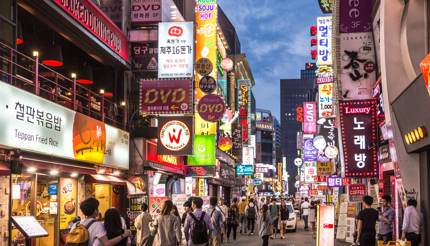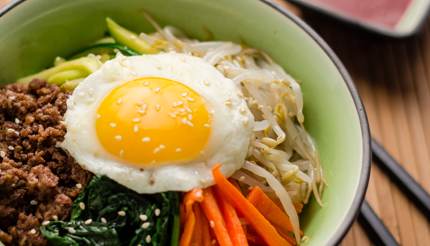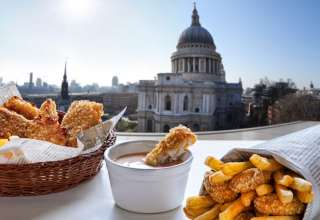The ubiquitous Korean spirit comes hedged around with rules and protocol. Matilda Battersby takes a tour
It’s unsurprising that a land that ferments everything from cabbage to fish should have the process down pat when it comes to booze.
Soju, a distilled rice-based spirit that is usually fermented for two weeks, is known as Korea’s vodka and is drunk pretty much everywhere.
It is served in metal kettles and comes in a variety of exotic flavours. The best, in my experience, are the fruity ones: pineapple or peach, with pomegranate a close third.
Devilishly hard to down in one
Unlike vodka it is traditionally consumed neat, usually from shot glasses. But you can get a “somaek” which is a shot of soju in a beer – and devilishly hard to down in one.
Soju-based cocktails are rare but do exist. These are extremely sweet and remind one of the sickly, novelty shots that are served in student union bars.
It might be having a moment in the UK and US, but soju is old hat in Korea. If you wander the streets, asking (in my case, with the help of a translation app) to be pointed to the nearest soju bar you will get nothing but bewildered looks.

That’s because the stuff is so ubiquitous it’s like asking someone in central London to point out the nearest place that serves food. They laugh at the obviousness.
No drinking without eating
Culturally it’s unacceptable to drink alcohol without eating. While “Soju Bars” are a trendy thing in the US, they simply don’t exist in Korea. Because they’re restaurants.
You certainly won’t find anyone sitting solo downing soju and entertaining barmen with tales of woe. Drinkers are usually in big groups: large family get-togethers or raucous giggling twentysomethings.
Fun might be had sitting around a soju kettle but that doesn’t mean you can let your hair down. There are strict protocols about how it should be served.
The rules of soju
Rule 1: You cannot serve yourself soju. Rule 2: Somebody more senior must serve you. Rule 3: You must hold your glass with both hands while being served. Rule 4: You must down your first shot in one.
These are observed pretty much universally, with warnings of bad luck abounding if unobserved.
“In a restaurant, at the 7 Eleven, in the street. You can drink soju anywhere, so long as you’re eating, and you will get much respect from local Koreans,” says Kim Bayeon, an Australian expat teaching English in Jeonju.
“But never pour your own, always pour for others, remember to receive with two hands and you’re good to go.”
In Busan and other cities known for street food soju is served in brightly coloured (usually orange) tents known as pojangmacha. The street food is very good indeed.
There are also specific types of food that you can or can’t eat while soju-ing.

Se Jun Do, who imports European wine and spirits to Korea, explains: “When it rains we eat pancakes with Soju. When it’s sunny we eat grilled pork and steak and anything deep fried. Oh and bibimbap, of course.”
Bibimbap is a comforting dish where you mix rice, veg and meat together. It is served on sizzling hot dishes and a soju kettle is an excellent accompaniment.
And finally… the hangover
Se Jun also tells me about having to hold your glass with both hands. When I ask why he says: “It’s an old people thing.”
Jinro is the most popular brand of sujo and its attractive green bottles can be found in supermarkets and restaurants wherever you go.
Ahn Sinbengi, a restaurant owner, says her customers prefer Makgeolli wine to soju. But during the three hours I was in there her customers — and I — consumed rather a lot of the stuff. So I begged to differ.
Like all good nights out in South Korea emptying a soju kettle meant we ended up in norebang — a tiny cupboard where you can sing karaoke with your friends. The hangover the next day was thunderous.






